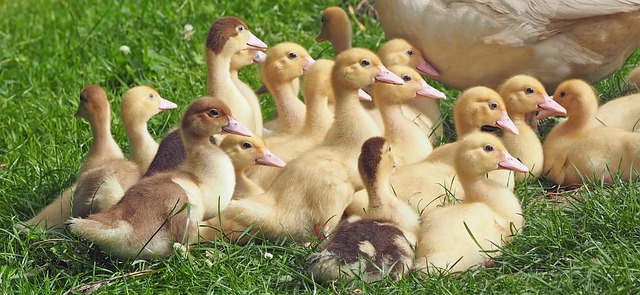Understanding goose behavior is crucial for effective geese control plans. These strategies focus on non-toxic, humane methods to discourage geese by modifying their habitats and using visual (reflective objects, scarecrows) and auditory (predator calls, ultrasonic devices) deterrents. Combining these techniques with physical barriers and regular maintenance, such as removing food sources and cleaning up debris, creates a comprehensive approach to keep outdoor spaces free from geese for the long term.
Geese can transform outdoor spaces, from parks to farmlands, into their own personal feeding grounds. However, managing these avian visitors presents a unique challenge. This article explores innovative and effective goose repellent solutions for your outdoor spaces, focusing on understanding goose behavior, non-toxic control methods, creative visual and auditory deterrents, and long-term strategies for sustainable geese control plans.
Understanding Geese Behavior for Effective Repellents
Understanding goose behavior is crucial when designing effective geese control plans for outdoor spaces. Geese are highly social birds and often form large flocks, especially during breeding seasons. They have a strong tendency to return to familiar habitats where they’ve found food and shelter before. This means that once a geographic area becomes a reliable source of sustenance, it’s likely to attract returning flocks year after year.
Geese also possess excellent vision and can detect movement from far distances. They’re attracted to open green spaces with easy access to water bodies like ponds or lakes. Repellents should therefore be strategically placed around these areas, focusing on visual deterrents combined with non-toxic, environmentally safe solutions that disrupt their feeding patterns without causing harm.
Non-Toxic and Humane Geese Control Methods
Geese control has evolved beyond traditional methods, with a growing focus on non-toxic and humane approaches that respect both wildlife and human needs. One such method is using natural deterrents like specific scents or sounds that geese find unpleasant. For instance, certain essential oils or plant extracts can be strategically placed to repel geese without causing them harm. Additionally, ultrasonic devices emit high-frequency sound waves that are harmless to humans but deter geese, making them less likely to frequent treated areas.
Another innovative approach involves modifying the outdoor space itself to make it less appealing to geese. This includes proper landscaping, such as planting native grass species that are less attractive to geese or creating physical barriers like hedges or fences. Geese control plans can also incorporate strategic lighting and noise systems that activate at certain times of day, providing a dynamic deterrent that reduces goose presence without resorting to harmful chemicals or traps.
Creative Solutions: Visual and Auditory Deterrents
Geese control plans often require creative solutions, especially when dealing with visual and auditory deterrents. Visual repellents can include strategically placing reflective objects like CDs or plastic birds in areas where geese congregate, as their reflections and movements can startle the birds. Auditory deterrents utilize sounds to keep geese away. Devices that emit predator calls or high-frequency noises can be effective, as geese are sensitive to these sounds and will typically avoid them.
These methods not only ensure efficient geese control plans but also promote humane treatment of the animals by offering non-lethal alternatives. By combining visual and auditory deterrents, outdoor space managers can create a multi-layered defense that significantly reduces goose presence without causing harm.
Long-Term Strategies for Sustained Geese Repellent Effectiveness
Maintaining a geese-free outdoor space requires more than just temporary solutions. Long-term strategies for geese control plans should focus on creating an environment that discourages these birds from returning. This involves a multi-faceted approach, combining visual deterrents like reflective objects and scarecrows with physical barriers such as fencing or mesh covers. By integrating these methods into the landscape design, you can create a less appealing habitat for geese, encouraging them to seek alternative feeding grounds.
Regular maintenance plays a crucial role in sustaining the effectiveness of these strategies. Removing any accessible food sources, cleaning up debris that might attract geese, and ensuring proper drainage to prevent standing water are essential steps. Additionally, seasonal adjustments in the environment should be considered; during migration seasons, implementing extra measures like noise deterrents or predator simulations can help keep geese at bay. A well-planned, integrated approach will ensure a more permanent solution to keeping outdoor spaces free from unwanted goose visitors.
In conclusion, effective geese control plans require a multi-faceted approach that combines understanding of goose behavior, non-toxic and humane methods, creative visual and auditory deterrents, and long-term strategies. By implementing these innovative solutions, outdoor spaces can be successfully protected from unwanted goose incursions, fostering balanced ecosystems while preserving the beauty and functionality of public areas.
